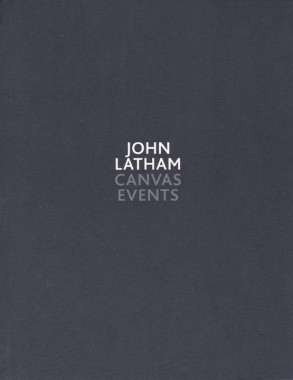
John Latham, Canvas Events
Softcover, 24 pp., offset 4/1, 215 x 275 mm
Edition of 1000
ISBN 978-1-905464-31-9
Published by Ridinghouse
$22.00 ·
Published on the occasion of the exhibition
John Latham, Canvas Events
at Karsten Schubert / Richard Saltoun
5 May — 11 June 2010
This small but impeccably produced catalog introduces a never-before-exhibited series of works by the late British artist John Latham (1921-2006). The 1994 works called, Canvas Events, features spray-painted and twisted canvas on wooden stretchers. The works challenge the conventional relationship between canvas and stretcher, turning the traditional site of the painting into a sculptural field. Latham often worked with spray paint; he often described the dotted sprinkled result as miniature universes. Reproductions of the 1994 Canvas Events are accompanied by a conversation between Latham, Hans Ulrich Obrist and Barbara Steveni, in which they discuss the artist’s work over time.
Art, Barbara Steveni, Hans Ulrich Obrist, Interview, John Latham, Karsten Schubert, RAM, Richard Saltoun, Ridinghouse, Tim Harvey
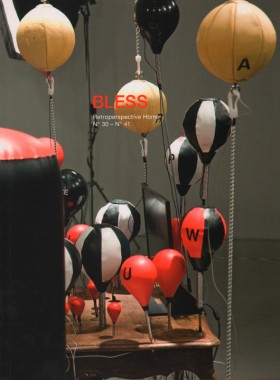
Bless, Retrospective Home Nº30 — Nº41
Softcover, 416 pp., offset 4/4, 185 x 250 mm
Edition of 2000
ISBN 978-1-934105-12-2
Published by Sternberg Press
$45.00 ·
Heralded as one of fashion’s most innovative designers, the Paris and Berlin-based duo BLESS (Désirée Heiss and Ines Kaag) refuse to capitalize on any one milieu, and instead explore the differences between and the mixing of the systems of art, fashion, and design. This book brings together visual and written documentation of BLESS’s last twelve collections (N° 30-N° 41), continually prompting and challenging the question of where a product begins and ends. Their latest project, N° 41 Retroperspective Home, culminates in an exhibition / intervention of the same title at the Kunsthaus.” The hybrid nature of [BLESS’s] output cries out to be tackled by an institution like ours,” state the curators of the exhibition,” but at the same time makes it very difficult to do so … This is precisely where the challenge of our exhibition lies, seeing art as design and fashion as architecture.”
Art, Bless, Desiree Heiss, Fashion, Ines Kaag, Manuel Raeder, RAM, Sternberg Press
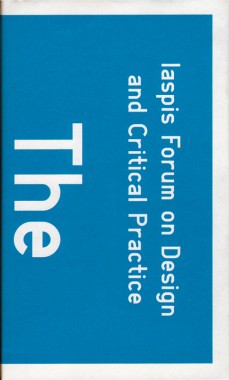
Iaspis Forum on Design and Critical Practice — The Reader
Softcover, 445 pp., offset 4/1, 125 x 210 mm
English and Swedish
Edition of 1000
ISBN 978-1-933128-63-4
Published by Sternberg Press and Iaspis
$25.00 ·
What happens when you look at design as something more than a service-based relationship between client and designer? What new strategies and models help to question and challenge the limits of design? The second publication from the Swedish design think-tank Iaspis, this idea-packed reader focuses on investigative, speculative, and critically oriented design, especially how design relates to architecture. Inspired by an exhibition produced by the Architectural Association in London, the reader is based on four conversations between graphic designers about various aspects of design relating to their practices. It also contains a number of interviews and other texts linked to these conversations, and a broader discussion about design and transboundary practice.
Abake, Art, Criticism, Dexter Sinister, Experimental Jetset, Iaspis, Jonas Williamsson, Magnus Ericson, Mark Owens, Martin Frostner, Practise, RAM, Sara Teleman, Sternberg Press, Will Holder, Zak Kyes
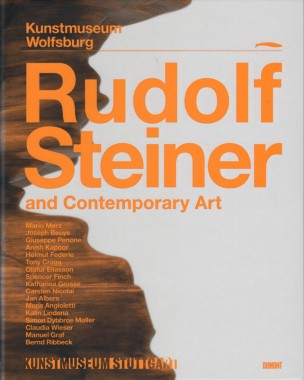
Markus Brüderlin and Ulrike Groos, Rudolf Steiner and Contemporary Art
Hardcover, 224 pp., offset 4/4, 240 x 315 mm
Edition of 5000
ISBN 978-3-8321-9278-5
Published by Dumont Buchverlag
$60.00 ·
At once a philosopher, educational and medical reformist, mystic and artist, Rudolf Steiner (1861-1925) was the founder of a spiritual movement he dubbed Anthroposophy, and of the famous school system that bears his name. Anthroposophy combined elements of German philosophy with Theosophical theory, and also made use of architecture, dance (Eurthymy), painting and sculpture to illustrate his ideas. Steiner’s artworks occupy a fascinatingly ambiguous status as both pedagogical and aesthetic entities, and served as springboards for the early work of Mondrian and Kandinsky among others; they have continued to influence artists down the generations. In 1992, Steiner’s panel drawings were exhibited at the Galerie Monika Sprüth in Cologne, renewing their efficacy for contemporary artists. Published for the Kunstmuseum Wolfsburg’s 2010 exhibition, this book is the first assessment of the influence of Anthroposophical thought on contemporary art.
Anish Kapoor, Anja Westermann, Anthroposophy, Architecture, Art, Bernd Ribbeck, Carl Kemper, Claudia Wieser, DAP, Double Standards, Dumont Buchverlag, Education, Galerie Monika Sprüth, Helmut Frederie, Holger Broeker, Jan Albers, Joseph Beuys, Kalin Lindena, Katharina Grosse, Kunstmuseum Wolfsburg, Manuel Graf, Mario Merz, Markus Brüderlin, Markus Mascher, Olafur Eliasson, Patricia Blankenhagen, Sarah Quigley, Spencer Finch, Stephanie Gotsch, Susanna Philippi, Tony Cragg, Ulrike Groos, Urlich Schwarz
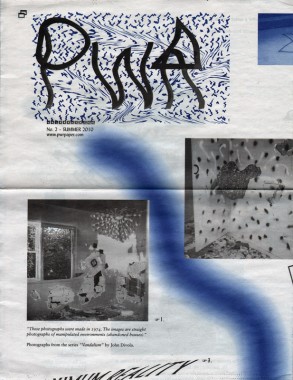
Hanna Terese Nilsson and Rasmus Svensson, PWR 2
Newspaper/poster, 16 pp., web offset 2/2, 570 x 760 mm
Edition of 1000
Published by PWR Paper
$6.00 · free* · out of print
*free copy with each order
Both the future and the past are mysterious places filled with hidden delights and lurking dangers. This is a poster-magazine about traveling in time as well as in (cyber)space. The third manifestation of PWR will be revealed shortly.
Gothenburg, Sweden, Earth, Internet.
Alexander Palmestål, Amanda Svensson, Andreas Banderas, Arran Ridley, Art, Artie Vierkant, Ben Jones, Brenna Murphy, Daniel Swan, Distribution, Elina Minn, Graphics, Hanna Terese Nilsson, Ida Lehtonen, Ignace Wouters, John Divola, Lisa Öberg, Louie Schumacher, Matt lock, Mikael Enqvist, Natalie Rognsøy, Photography, Poster Company, PWR Paper, Rasmus Svensson
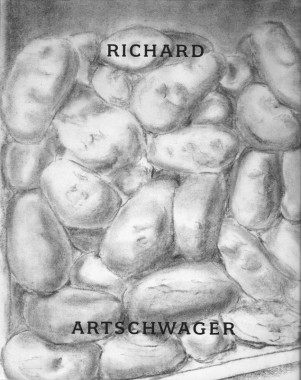
Richard Artschwager, Objects As Images of Objects
Hardcover, 128 pp., offset 4/1, 8.25 x 10.25 inches
Edition of 2000
ISBN 978-09771714-4-6
Published by David Nolan Gallery
$55.00 ·
Described variously as Minimalist, Conceptualist, Pop and (more recently) proto-Neo-Geo, Richard Artschwager’s art has long defied easy categorization, a sure sign that he has been doing something right. His career as a sculptor and draughtsman has playfully engaged issues of surface, material, object and function to pose repeatedly the Duchampian question: what constitutes an art object? Objects as Images of Objects is a 40-year survey of drawings in charcoal, ink and pastel, from the 1960s to the present, by an artist for whom drawing has remained primary, a spine of continuity throughout his many preoccupations. The diversity of imagery contained in these works on paper–including colorfully surreal landscapes and ambiguous shapes and objects that wreak havoc with cognition, sometimes floating on a sheet or arranged in different perspectives, other times taken from photographs and newspapers–reflect the artist’s highly idiosyncratic approach to image-making.
Alexi Worth, Art, DAP, David Nolan Gallery, Drawing, Richard Artschwager
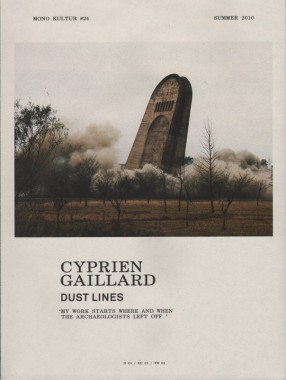
Mono.Kultur 24, Cyprien Gaillard
Softcover, 48 pp., offset 4/4, 150 x 200 mm
Edition of 5000
ISSN 1861-7085
Published by Mono.Kultur
$9.00 ·
It was late January when Cyprien Gaillard arrived, the time of year when the city is cold and grey. Yet the weather could not dampen his enthusiasm for urban exploration. He could hardly wait to wrap up the installation of his exhibition at the Wexner Center for the Arts to see Columbus, the state capital of Ohio. In line with his artistic interests in the contradictions of our contemporary landscapes, his list of must-sees included structures and places that others would rather ignore, and sites where contemporary claims to history have given rise to surprising visual manifestations.
We had started the day with a drive-by tour of fraternity and sorority houses — a staple of any North American university campus. Equipped with a Polaroid camera, Cyprien Gaillard began to survey the facades: Clustered together in an area of old, tree-lined streets, the architecture borrowed liberally from various periods and styles: Lily-white, Greco-Roman temple fronts alternated with Colonial-style brick facades, Tudor half-timber and 1960s austerity. The buildings laid bare the friction between the grandiloquent desires of the past and the rather more mundane present. Just as we were about to leave, a handful of student revellers emerged from one of the fraternities with beer cans in hand and posed for a photograph in the brisk morning air.
Anna Saulwick, Architecture, Art, Caroline Heuer, Catharina Manchanda, Cyprien Gaillard, Distribution, Elodie Evers, Eva M Goncalves, Florian Rehn, Joel Alas, Kai von Rabenau, Magdalena Magiera, Mario Lombardo, Matthias Sohr, Mono.Kultur, Renko Heuer, Sam Cate-Gumpert, Sarah Ryan, Tina Wessel, Urs Bellermann, Ute Kuhn
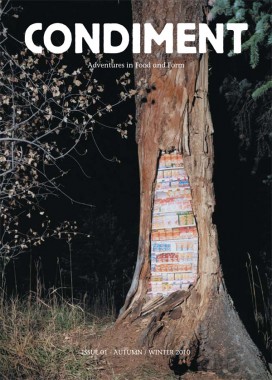
Condiment 1 — Adventures in Food and Form
Softcover, 72 pp., offset 4/4, 165 x 230 mm
Edition of 1000
ISSN 1837–8226
Published by Condiment
$18.00 ·
Condiment — Adventures in Food and Form is a publication and project-base exploring the relationship between food and creativity and food and community.
For the most part, food is nature at its most familiar. While views on its production and presentation become ever more complex and conflicted, it is nevertheless us that set the parameters.
As its masters we think: food is here to serve us. But quite possibly: we are here to serve food. Reversing the roles and giving up control is an eye-opening exercise. After all it is we who are dependent on food, and not food that is dependent on us.
One key attribute to the good servant is enthusiasm and enthusiasm is most often found in the amateur. The true amateur, of which E.C. Large was proudly an advocate, is defined as “one who loves”.
Beyond our own lack of expertise, although that is true too, it is this simple sentiment that has informed Condiment — Adventures in Food and Form. Equal parts wonder and worship, each page of this publication is not as much about what we do know as what we don’t.
Amanda Maxwell, Anders Jander, Art, Chris Barton, Christopher LG Hill, Condiment, Darren Sylvester, Distribution, E.C. Large, Ellen Birrell, ffiXXed, Food, Jessica Brent, Martino Gamper, Melanie Bonajo, Per Englund, Postalco, Ready For The House, Shauna T., Taiyo Onorato and Nico Krebs, Yumiko Utsu
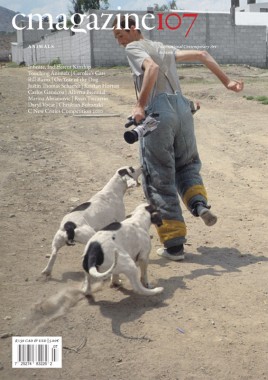
C Magazine 107, Animals
Softcover, 64 pp., offset 4/1, 210 x 295 mm
Edition of 2000
ISSN 1480-5472
Published by C Magazine
$7.50 ·
Issue 107 includes feature essays by Carla Benzan, on Carolee Schneemann’s cats; Karen Houle, on ethics and animal kinship; Jon Davies, on Mike White’s film, Year of the Dog; and Helena Reckitt, writing about human/non-human animal relationships; book and exhibition reviews from Calgary, the Alberta Biennial in Edmonton, Dublin, Halifax, Montreal, New York, Paris, Peterborough, Toronto, the winning entry for the 2010 New Critics Competition from Minneapolis; and an artist project by Bill Burns, with an essay by Gentiane Bélanger.
Adrian Blackwell, Aileen Burns, Alex Snukal, Amish Morrell, Art, Bill Burns, C Magazine, Carla Benzan, Christian Boltanski, Criticism, Dan Adler, Daryl Vocat, David Hoffos, Distribution, Gentiane Bélanger, Helena Reckitt, James D. Campbell, Johan Lundh, Jon Davies, Jovana Jankovic, Karen Houle, Kristan Horton, Leah Modigliani, Leah Turner, Marina Abramović, Marion Wagschal, Maxine Proctor, Nadja Sayej, Quyen Hoang, Ryan Trecartin, Sally Frater, Sarah Parsons, Stephen Kelly, Theory, Zoë Chan
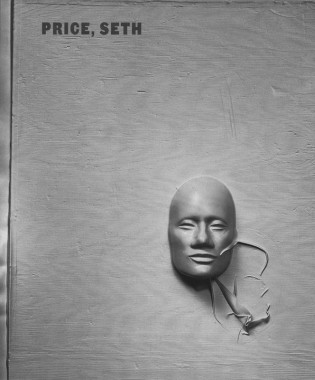
Seth Price, Price, Seth
Hardcover, 108 pp., offset 4/4, 200 x 240 mm
Edition of 2000
ISBN 978-3-03764-028-9
Published by JRP|Ringier
$35.00 ·
Through paintings, sculpture, video, and media work, Seth Price underlines the production strategies, dissemination modes, and valuation patterns of art. His appropriationist work, which he rather calls a “redistribution” of (often) pirated materials, disrupts the operations of commodity culture. Among his formats and tactics one should mention the recycling of iconic illustrations, reduplication (from digital to vacuum-formed techniques), the reenactment of projects, and the collaborative actions with
Continuous Project (formed in 2003 with Bettina Funcke, Wade Guyton, and Joseph Logan) or other artists.
The first monograph dedicated to the artist, this book includes an essay by Michael Newman as well as Price’s own critical take on his practice, given in the form of a videotaped conference that structures the presentation of his works.
Anja Nathan-Dorn, Art, Beatrix Ruf, Bettina Funcke, Clare Manchester, DAP, Farzad Owrang, Joseph Logan, JRP|Ringier, Kathrin Jentjens, Katy Homans, Kölnischer Kunstverein, Kunsthalle Zürich, Michael Newman, Richard G. Gallin, Sam Drake, Seth Price, Simon Vogel, Stefan Altenburger, Wade Guyton
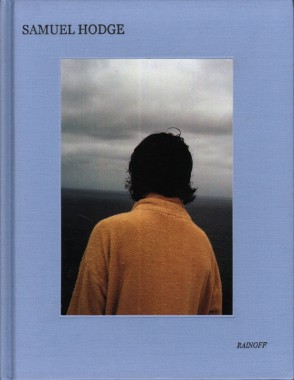
Samuel Hodge, Pretty Telling I Suppose
Hardcover, 72 pp., offset 4/4, 203 x 266 mm
Edition of 500
ISBN 978-0-9806516-0-7
Published by Rainoff Books
$45.00 ·
Foreword by Gert Jonkers.
Art, Culture, Distribution, Gert Jonkers, Photography, Rainoff Books, Samuel Hodge
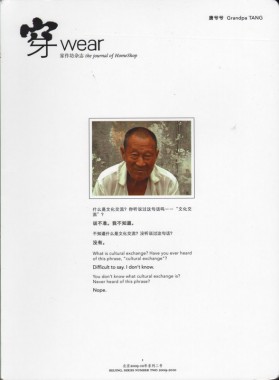
Elaine W. Ho, Wear 2010 (Cultural Exchange)
Hardcover, 80 pp. + 28 pp. insert, offset 4/4, 185 x 250 x 28 mm
Edition of 500
ISSN 2078-8691
Published by HomeShop
$25.00 ·
This issue and the second season of HomeShop are marked by a more cynical bent, whereby the pointedness of quotation marks, as in “cultural exchange”, invite investigation into the deeper multiplicities and ambivalence hidden within this overwrought term. Continuing its documentation of daily life in the hutong, Wear number two intertwines HomeShop’s series of exercises in cultural exchange with commentary, imagery and special projects on the topic by contributors such as Carol Yinghua Lu, RAQS Media Collective, Meiya Lin and Michael Eddy. A special 28-page insert has also been created especially for the journal by artist Reinaart Vanhoe.
Wear is the independently published journal of HomeShop, an artists’ initiative located in one of the hutong alleyways in the centre of Beijing. Aiming to be an annual project, WEAR combines an artist book, theoretical reader and social research in printed form. The journal documents the public activities, discussions and interventions organised at HomeShop, also serving as a broader platform from which to gather contributions from artists, writers and the folks in the neighbourhood for a local dialogue and everyday reflection upon the contradictions and dynamism of a fast-changing China.
Anouchka van Driel, Art, Barbara Fang, Beatrice Ferrari, Carol Yinghua Lu, Claude Tao, Culture, Distribution, Elaine Ho, Fashion, Gao Bei, HomeShop, Mai Dian, Meiya Lin, Michael Eddy, Qu Yizhen, Reinaart Vanhoe, Wear, Xia Jian, Yan Teng
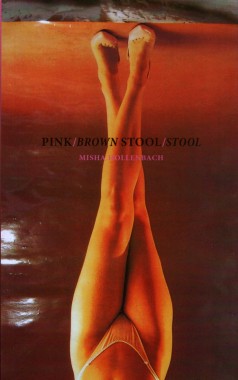
Misha Hollenbach, Pink/Brown Stool/Stool
Softcover, 64 pp., offset 4/4, 4.5 x 7 inches
Edition of 250
ISBN 978-0-9825936-3-9
Published by Seems
out of print
Born last century. Based in Melbourne, Australia. Misha Hollenbach lives and works in many languages, times and places. Hollenbach is one half of the brand Perks and Mini (P.A.M.) a multi media excursion encompassing art, design, fashion, and publishing. He is also part of The Changes, music and art collective.
Hollenbach is influenced by energy, as his work moves through various mediums including sculpture and painting, printed media and collage. Rather than shy away from objects deemed useless, or unwanted, he embraces their meaningless meanings to create an unfamiliar language containing familiar objects. By employing found objects and pairing them with wit and humor, he continues the narrative of the Dada and Pop artists.
In a lineage that extends through Jim Shaw, Andy Warhol and Marcel Duchamp, the rallying around the already readymade repositions things for freer symbolic enterprises. In the re-presentation of shit, Misha touches upon the etymological origins of faeces, which derives from faex, the Latin for dregs. He is using the dregs, things humans have casted away; shit becomes a metaphor for the unwanted.
By putting these outcasts back together with ready mix, the images of the objects do not return to us as they normally should; they lose their original function. With this method, he is breaking our own need to put the image back together in a fixed or familiar way. He strips back the structure of meaning — and this brings about a danger: the readymades return as phantasms and representations of abstract ideas. A Hush Puppy becomes a Push Poopy. Doodoo becomes Dada.
—Timothy Moore
Andy Warhol, Art, Culture, Distribution, Jim Shaw, Marcel Duchamp, Misha Hollenbach, Seems, Timothy Moore












